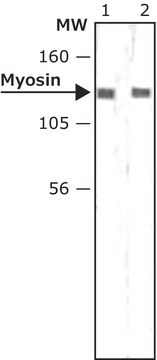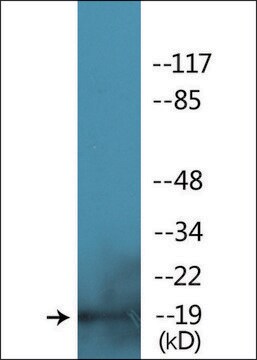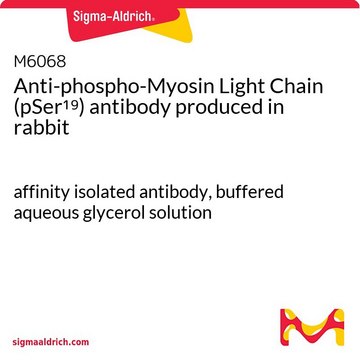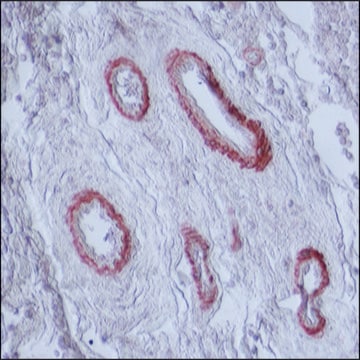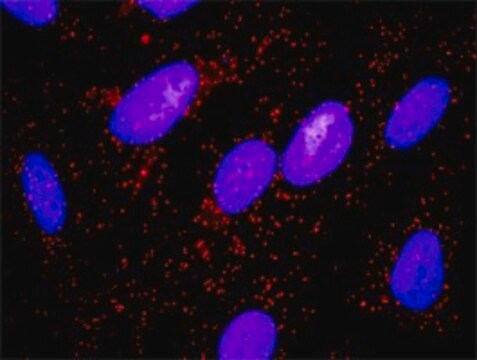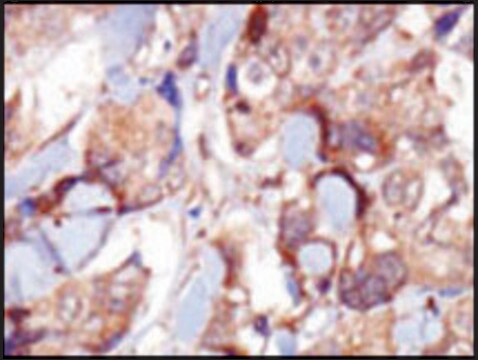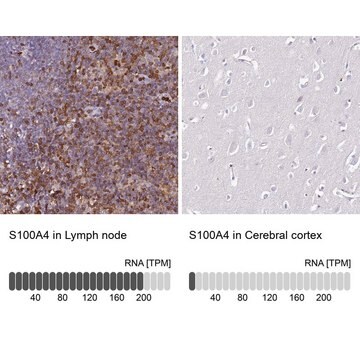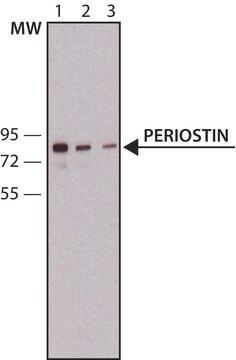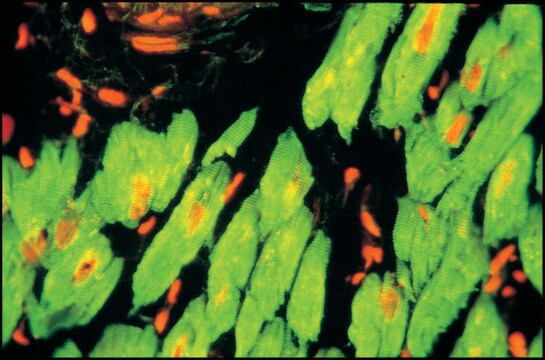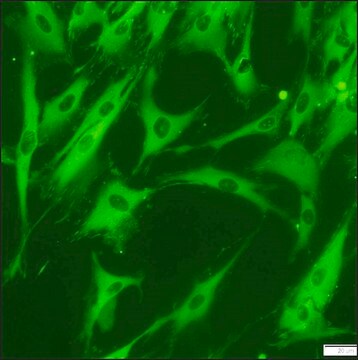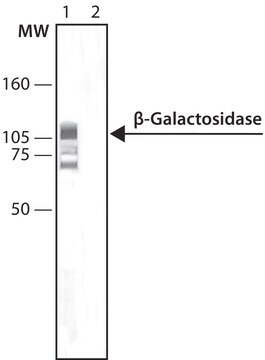M4401
Monoclonal Anti-Myosin (Light Chains 20 kDa) antibody produced in mouse
clone MY-21, ascites fluid
Synonym(s):
Myosin Light Chain Antibody, Myosin Light Chain Antibody - Monoclonal Anti-Myosin (Light Chains 20 kDa) antibody produced in mouse
About This Item
WB
western blot: suitable using denatured and reduced myosin of muscle
Recommended Products
biological source
mouse
Quality Level
conjugate
unconjugated
antibody form
ascites fluid
antibody product type
primary antibodies
clone
MY-21, monoclonal
mol wt
antigen 20 kDa
contains
15 mM sodium azide
species reactivity
human, chicken, pig, bovine, rabbit
technique(s)
indirect immunofluorescence: 1:200 using human or chicken fibroblasts
western blot: suitable using denatured and reduced myosin of muscle
isotype
IgM
UniProt accession no.
shipped in
dry ice
storage temp.
−20°C
target post-translational modification
unmodified
Gene Information
chicken ... MYLK2(396356)
human ... MYLK2(85366)
General description
Specificity
Immunogen
Application
- western blot analysis
- fluorescence immunohistochemistry
- confocal microscopy
Biochem/physiol Actions
Physical form
Storage and Stability
Disclaimer
Not finding the right product?
Try our Product Selector Tool.
Storage Class Code
10 - Combustible liquids
WGK
nwg
Flash Point(F)
Not applicable
Flash Point(C)
Not applicable
Choose from one of the most recent versions:
Already Own This Product?
Find documentation for the products that you have recently purchased in the Document Library.
Customers Also Viewed
Our team of scientists has experience in all areas of research including Life Science, Material Science, Chemical Synthesis, Chromatography, Analytical and many others.
Contact Technical Service